Last Updated on November 21, 2024 by chanuka chanuka.23e2
Updated: November 21, 2024
Key Takeaways for Building Deck Stairs
- Precision is Key: Accurate measurements for rise, run, and step dimensions are essential for safety and compliance with local building codes. Double-check all calculations before cutting materials.
- Choose the Right Materials: Pressure-treated wood, composite, or metal materials ensure durability and weather resistance. High-quality fasteners and connectors enhance the overall strength.
- Secure Stringer Installation: Properly anchoring stringers to the deck frame guarantees a stable and safe foundation for your stairs.
- Railings Add Safety and Style: Railings not only provide safety but also enhance the aesthetic appeal. Opt for designs that match your deck’s style and meet height and spacing codes.
- Plan and Prepare for Longevity: A well-designed landing and finishing touches, like sanding and sealing, increase the stairs’ functionality and lifespan, making them a valuable addition to your outdoor space.
Building Deck Stairs and Railing Guide
Adding contemporary railing on deck stairs is a creative approach to improve the use and visual appeal of your outdoor area. As you set out on your adventure, take into account the following components to design an attractive and secure deck staircase.
How to Build Deck Stairs & Steps
Building deck stairs is a gratifying and functional DIY project that can elevate your outdoor living space. Here’s an extended guide with vivid details to empower you with the knowledge to execute this task with precision and creativity:
Step 1: Preparation & Gathering of Materials
Preparation is the cornerstone of a successful decking project. Start by planning the size and placement of your stairs, then list all necessary materials:
- Pressure-treated lumber for stringers, treads, and risers
- Decking screws and galvanized nails
- Metal brackets for stringer support
- Tools such as a circular saw, drill, tape measure, level, and framing square
Step 2: Detailed Layout and Marking
Measure twice, cut once – a mantra for accuracy. Outline the layout of your staircase directly on the deck using chalk or a long straight edge. This involves calculating the rise (overall vertical height) and run (overall horizontal length), and demarcating the placement of each step.
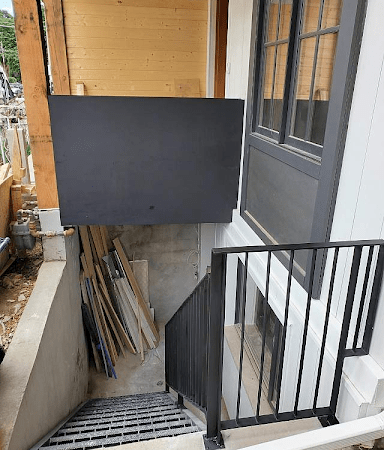
Expert Tip: Temporarily set up a string line in your proposed stair location to visualize the flow and adjust if necessary.
Step 3: Crafting the Stringers
The stringers are the backbone of your stairs. Using your layout measurements, mark out the cuts on your stringer boards with a carpenter’s square and a stair gauge. Precision is key, as these will support every step you take.
Step 4: Secure Attachment of Stringers
Anchor the stringers to your deck frame with robust brackets and fasteners for stability. This reinforces your staircase’s foundation, making each journey up and down a confident one.
Safety Highlight: Don’t skimp on the hardware – firm attachment means peace of mind with every step.
Step 5: Treads and Risers Installation
Now comes the visual part – adding the treads and risers. Set the risers (vertical part) first, then place the treads (horizontal part) on the stringers. Precision during this phase ensures a harmonious rise and run, with each step inviting and balanced.
Step 6: Railings for Safety and Style
Railings are more than safety barriers; they’re style statements. Install posts, balusters, and handrails that reflect your home’s aesthetic while ensuring they follow local codes for height and spacing.
Decorative Tip: Choose railing designs that complement your home’s style, and consider integrating lighting for ambiance and nighttime visibility.
Step 7: The Aesthetic Finishing Touches
Sand any rough edges to prevent splinters, then paint, stain, or seal your stairs, depending on the lumber and look you desire. These finishings protect your stairs from weather while accentuating your home’s charm.
Inspiring Suggestion: Your final touches should reflect your personality – whether it’s a classic stain that celebrates the lumber’s natural grain or a bold color that announces your knack for design.
Remember: The true reward of DIY comes as much from creating as from the final product. With each step carefully shaped, your deck stairs become a testament to your hard work, bringing lasting charm and reliability to your outdoor retreat.
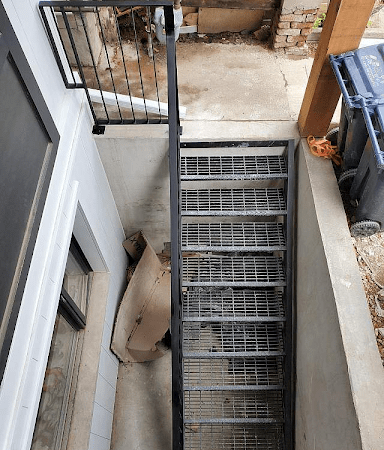
Tools and Materials Needed to Build Deck Stairs
Embarking on building deck stairs & steps necessitates the right tools and materials. Arm yourself with a precise tape measure, a trusty circular saw, and a sturdy drill. Select pressure-treated lumber and durable fasteners to assemble stairs that are as enduring as they are attractive. With these essentials, you’re set for a successful DIY project that will enhance your outdoor space:
| Category | Items |
| Tools Required |
– Tape measure – Circular saw – Stair gauge – Framing square – Drill with a variety of screw bits – Level – Chalk line – Safety glasses – Carpenter’s pencil – Jigsaw – Miter saw – Router with round-over bits – Hammer or rubber mallet – Speed square – Post hole digger or shovel – Ratchet set – Hearing protection |
| Materials Required |
– Pressure-treated lumber for stringers and treads – Deck screws of recommended length – Galvanized or stainless steel nails and/or bolts – Metal connectors and brackets – Pre-cut stair stringers (optional) – High-grade timber or composite for risers and treads – Handrail and baluster materials (wood, metal, or composite) – Concrete mix – Gravel and/or paver base (for landing pad) – Wood sealant or stain/paint (optional) |
Planning Your Deck Stairs
Estimated Costs to Build Deck Stairs
When planning to build deck stairs, a thorough cost estimation is vital for a smooth building process. The first step is to list all the materials and tools required, considering their price, durability, and the value they bring to your project. High-quality materials may come with a higher upfront cost but can offer longevity and reduced maintenance costs over time.
Here’s a rough estimate breakdown:

- Materials: Pressure-treated lumber is often the most cost-effective and range from $5 to $20 per square foot. If opting for higher-end composites or hardwoods, prices can jump to $30 to $60 per square foot.
- Tools: If you’re starting from scratch without a basic set of tools, anticipate spending between $200 to $600 for purchasing or renting the necessary equipment.
- Railings and Balusters: Considering safety and legal requirements, a standard railing system can cost between $50 to $120 per linear foot, with variations based on material choices.
- Additional Hardware and Supplies: Fasteners, metal connectors, concrete for footings, and sealants can add another $100 to $300 to your total costs.
- Labor: If hiring professional help, labor can cost anywhere between $500 to $2000 for a standard set of stairs, assuming no complications or custom work.
Be Aware of Building Code Requirements
Safety and compliance are essential when building deck stairs. Ensure your design meets local building codes by adhering to the following standards:
- Tread Depth and Riser Height: Must match code specifications for safe stepping.
- Railing Height and Spacing: Required to prevent falls, with spacing to stop small children from slipping through.
- Baluster Distance: Observes set limits to maintain safety without compromising aesthetics.
Always consult with local authorities to confirm your deck stairs are code-compliant, safeguarding against future issues. By following these guidelines, you maintain safety while achieving a visually pleasing staircase.

Determine the Location of Deck Stairs and Access Points
Choosing the right spot for your deck stairs is a balance of convenience and safety. It’s essential to assess foot traffic patterns and existing landscape features. Opt for a location that provides easy access to and from the deck while avoiding obstructions. Think about how the stairs will integrate with your garden or yard and the impact on the overall use of space.
Draw Up a Plan Before You Build
Once you’ve determined the optimal location for your stairs, it’s time to plan. This involves visualizing your staircase within the available space. Begin by calculating the deck’s height from the ground to establish the total rise. Divide this by the average rise height for each step to figure out how many steps you’ll need. Factor in the desired tread depth for each step to determine the stairs’ total run.
Stair Measurements: Ensuring Your Deck Stairs Measure Up
Building a new set of deck stairs should be done with careful attention to detail. Not only do you want your steps to be safe and durable, but you also want to make sure they’re in compliance with local building codes. Here are foundational measurements which can guide you in crafting well-constructed deck stairs:
Step 1: Total Rise
Begin with determining the ‘total rise,’ which is the overall vertical height from the ground level to the top of the deck. This is your foundational measurement that will inform the rest of the stair-building process.

Step 2: Number of Risers
The number of risers is calculated by dividing the total rise by the height of each step. Standard step height ranges between 6-1/2 and 8 inches. The number you get is the approximate count of risers needed — adjust to the nearest whole number ensuring the riser height is within the standard range.
Step 3: Number of Treads and Total Run
Treads are the horizontal boards that you step on. The number of treads is one less than the number of risers. Multiply the number of treads by the ideal tread depth (about 10-1/4 inches for comfort) to get the ‘total run.’
Step 4: Exact Riser Height
For the exact riser height, you need to divide the total rise by your number of risers. Ensure this figure falls within the recommended range. If not, adjust your total risers, and consequently the treads, and re-calculate for precision.
Step 5: Layout of Stringers
Using your exact riser and tread dimensions, layout the stair stringers. The stringers are the structural supports for the risers and treads, and this is where precision cutting is crucial to your staircase’s integrity.
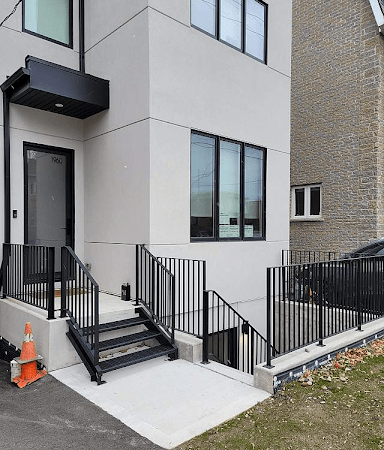
Creating a Stair Landing: A Practical Addition to Your Deck Stairs
As you build a set of deck stairs, incorporating a landing is a smart touch for long or complex staircases. A well-crafted landing offers a restful point, contributes to the stairs’ safety, and provides design versatility. Follow these steps, in the style of Family Handyman, to create a secure and visually appealing stair landing.
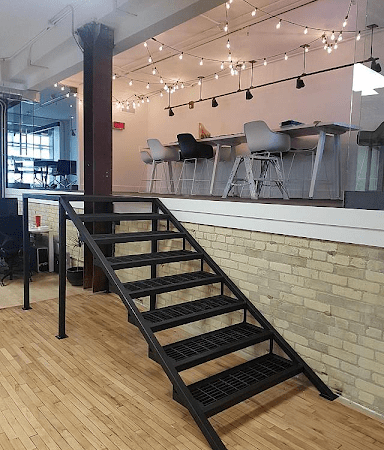
Determining the Landing Area
First, imagine the trajectory of your deck stairs to determine the appropriate place for your landing. Use a straight board, extend it from the deck, and level it out to where the landing will be. The point where the board meets your estimated landing area is where you’ll measure down to the ground to gauge the height.
Calculating the Landing Size
The size of your landing should comfortably accommodate foot traffic and align with the width of the stairs. Typically, the landing’s size equates to the total width of three stair treads.
Preparing the Landing Base
Establishing a sturdy base is essential. Depending on your preference and design, you can opt for a concrete slab, a wooden deck, or a treated lumber foundation over a gravel base. The base should be level and securely anchored to support the weight and resist shifting.
Connecting the Stringers
After creating the base, align the stair stringers to the top and bottom of your landing. Trim the stringers if necessary to ensure they meet the landing seamlessly, maintaining the rise and run of your staircase.
Attaching the Landing to the Stairs
Once the base is ready, proceed to attach the stair stringers to the landing. Confirm that everything is level, square, and securely fastened. Select the same material for the landing as the rest of the staircase to ensure design continuity.
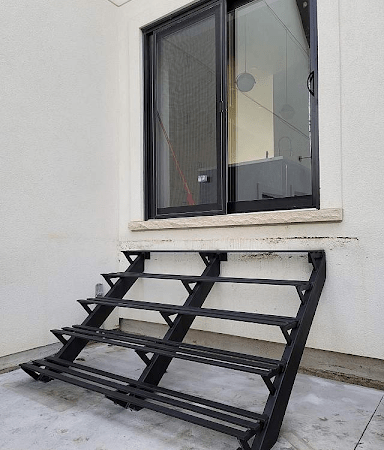
How to Add Steps & Railing to Decking?
Incorporating steps and railings into your deck enhances safety and aesthetics. This process involves evaluating your deck’s layout for optimal placement. Material selection, whether wood or metal, should complement your deck’s design and withstand outdoor conditions.
Secure step installation ensures a seamless connection with your deck’s surface while attaching railings to both the deck and steps guarantees stability. Baluster placement adds support and visual appeal.
Finishing touches like sanding and finishing protect your steps and railings, extending their lifespan. By thoughtfully navigating each stage, you create a unified, safe, and stylish deck space that endures.
Standard Decking Stair Kits
Standard decking stair kits offer a practical and effective way to upgrade your deck with a new set of attached stairs. These kits provide a simple way to add steps to your deck, and they might be a wise decision for several reasons.
Pre-measured components are one of the obvious benefits of decking stair kits. Simply using this function can help you avoid wasting time and effort on measuring and cutting items. Pre-measured parts allow you to simplify the assembly process and save time by avoiding the burden of exact measurements.
How To Build Steel Stairs & Stringers For Decks?
Steel stairs and stringers offer durability and a modern aesthetic to your deck. Here’s a step-by-step guide on how to build deck stairs out of steel:
Step 1: Design Considerations
Determine the desired height and width of your stairs. Consider the number of steps needed and the angle of the stairs.
Step 2: Stringer Design
Create a detailed design for your stringers. Steel stringers provide a sleek appearance and can be customized to match your deck’s style.
Step 3: Material Selection
Choose high-quality steel for your stringers. Consider factors like gauge, corrosion resistance, and finish options.
Step 4: Cutting and Welding
Cut the steel stair stringers according to your design and weld any necessary joints.
Step 5: Stair Tread and Riser Installation
Attach the treads and stair risers to the stringers securely. These should provide a comfortable and safe stepping surface.
Step 6: Finishing Touches
Sand and finish the steel to prevent rust and enhance its appearance.
Prefabricated Metal Stairs and Deck Landing
The main reasons for choosing metal stairs among the structures made of other materials are reliability and durability. Steel structures have the property to withstand a sufficiently large amount of weight. Therefore, there is a unique opportunity to create original, non-standard projects.
Start Building Your Deck Stairs Today!
Begin crafting the gateway to your outdoor oasis by taking the first strides in building your deck stairs today! Assemble your tools, secure your materials, and set forth on a DIY adventure that promises to elevate both the form and function of your backyard retreat. Get ready, set, and take action — the steps to a refreshed outdoor experience are just a build away!
FAQs About Building Deck Stairs
What are the standard dimensions for deck stairs?
Last Updated on November 21, 2024 by chanuka chanuka.23e2
The riser height typically ranges from 6 ½ to 8 inches, and the tread depth should be around 10 ¼ inches for comfort and safety.
Do I need a permit to build deck stairs?
Last Updated on November 21, 2024 by chanuka chanuka.23e2
Yes, most local authorities require a permit to ensure the stairs meet safety and building code requirements.
What materials are best for deck stairs?
Last Updated on November 21, 2024 by chanuka chanuka.23e2
Pressure-treated lumber, composite materials, or metal (like steel stringers) are popular choices for durability and aesthetic versatility.
How do I ensure my deck stairs are safe?
Last Updated on November 21, 2024 by chanuka chanuka.23e2
Secure stringer attachment, proper railing installation, and adherence to building codes for tread and riser dimensions are critical for safety.
Can I build deck stairs myself, or should I hire a professional?
Last Updated on November 21, 2024 by chanuka chanuka.23e2
Building deck stairs can be a DIY project if you have the tools and skills. However, for complex designs or ensuring code compliance, hiring a professional is recommended.




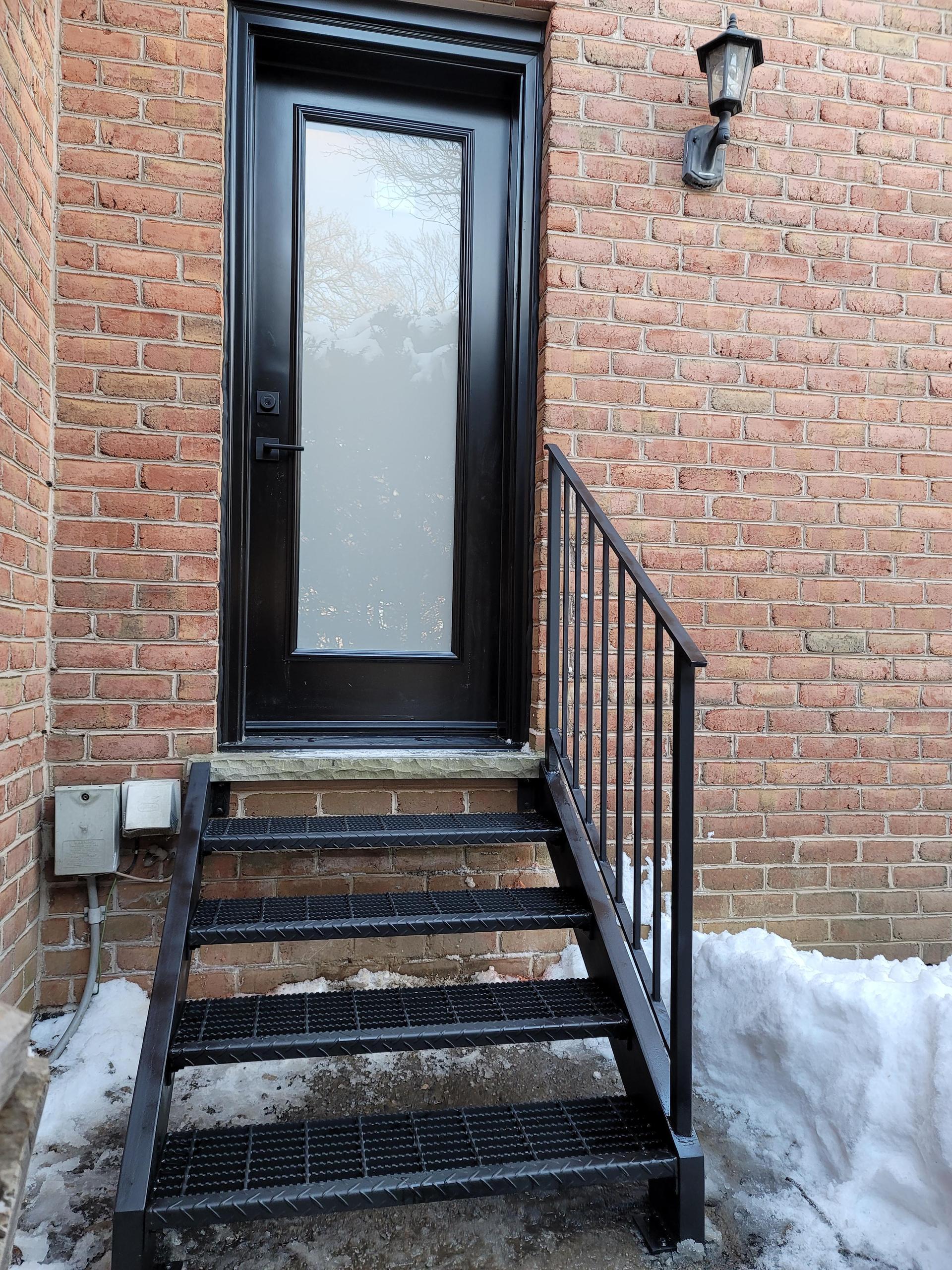


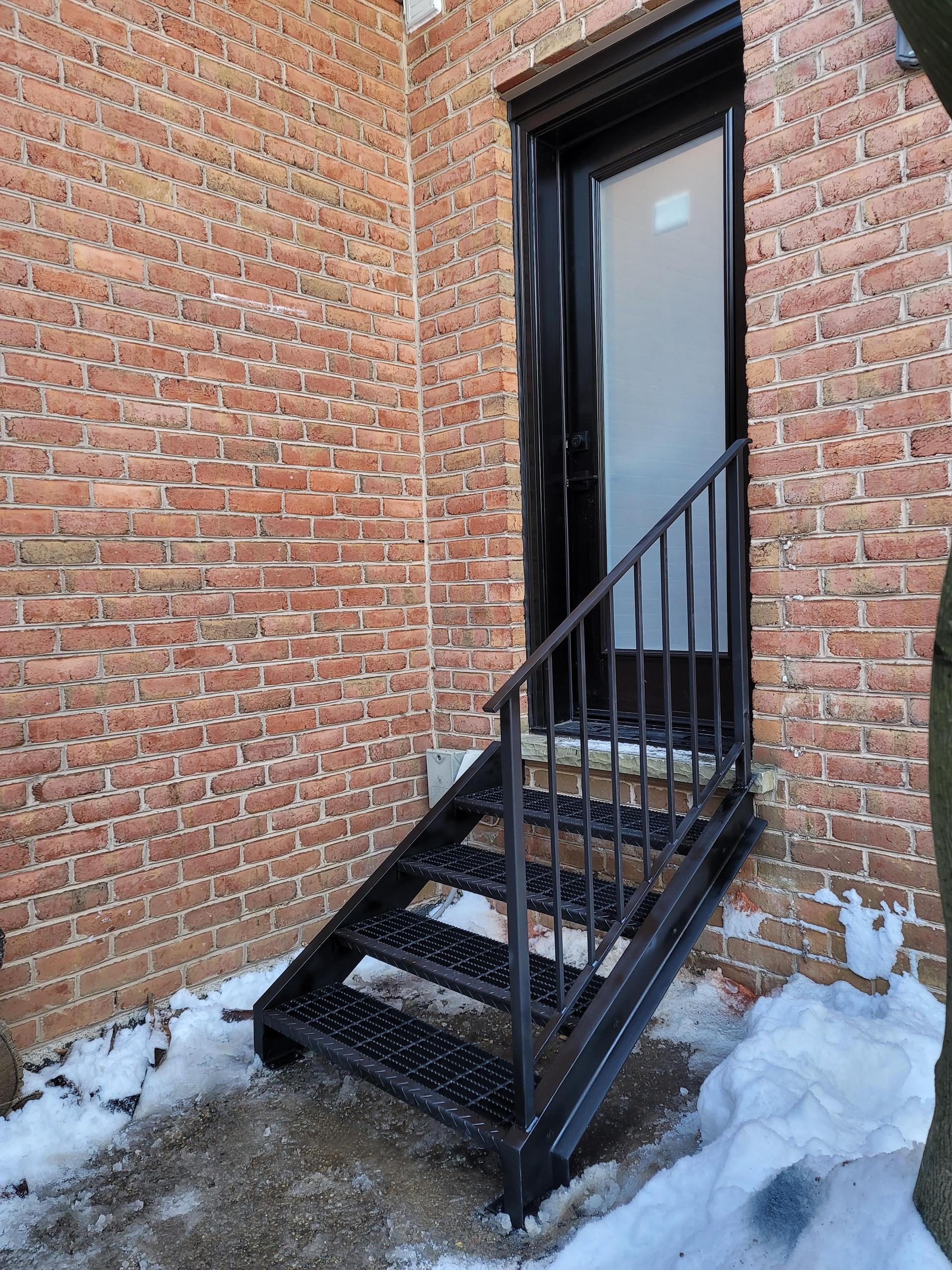

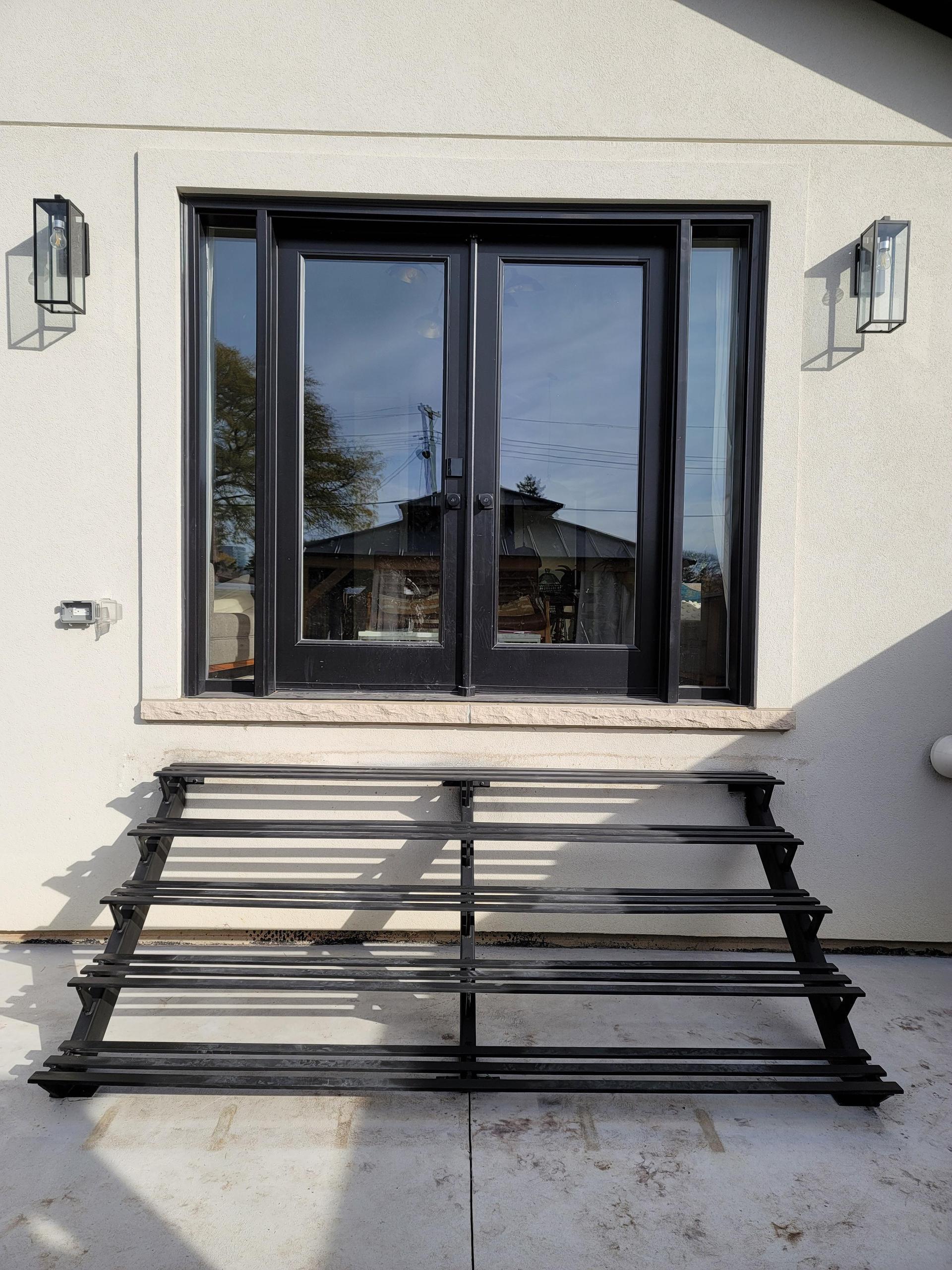



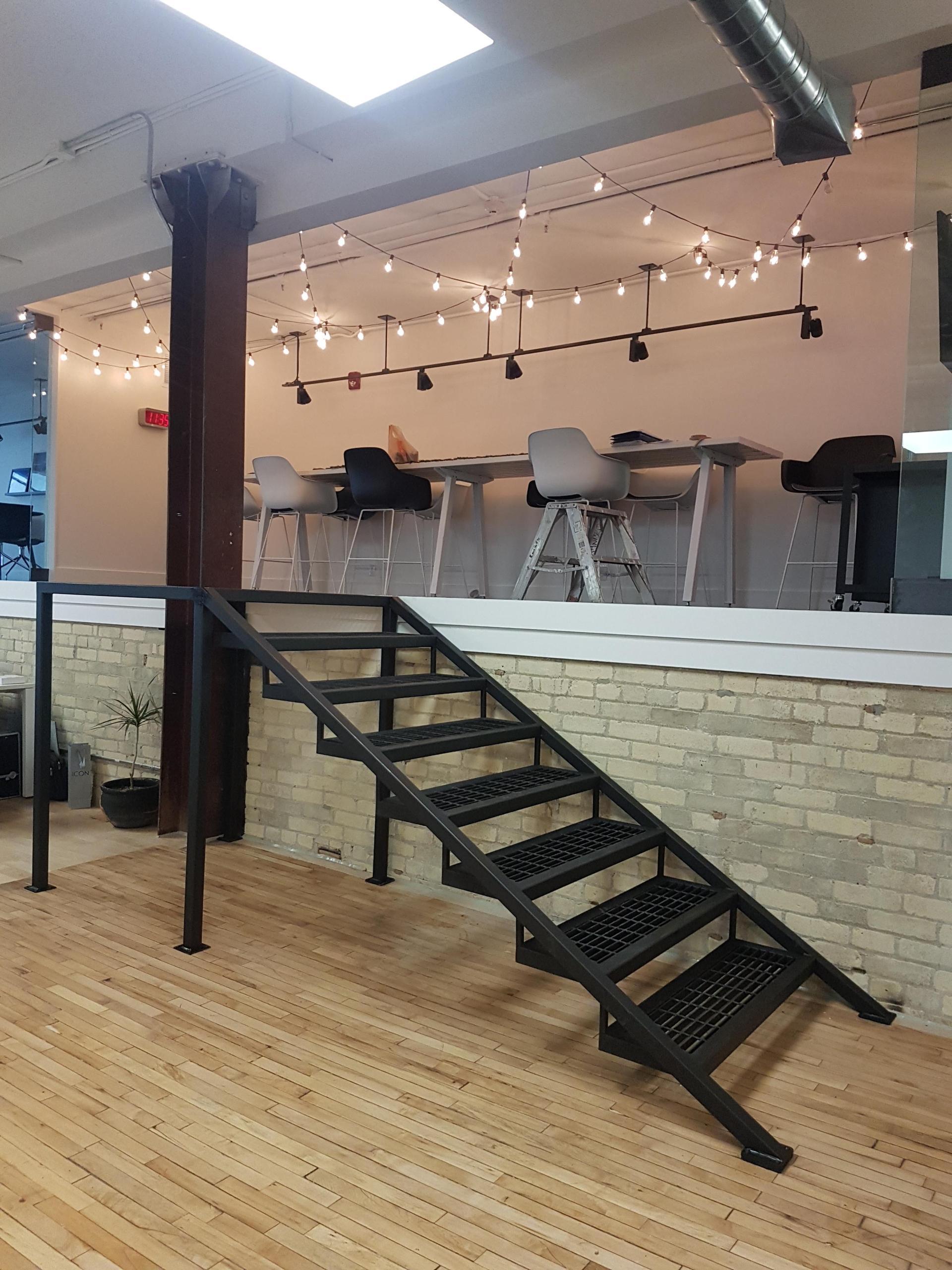


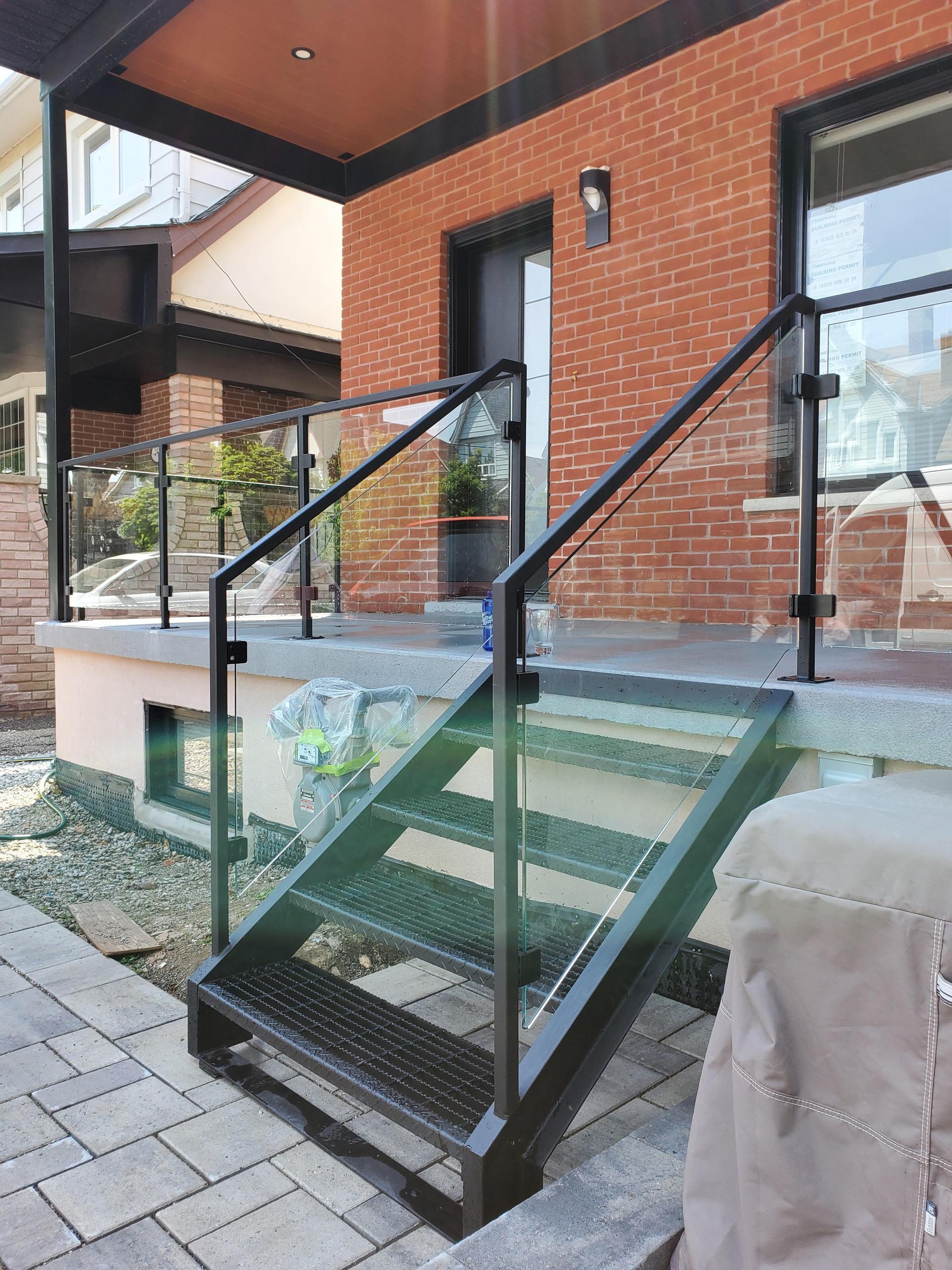
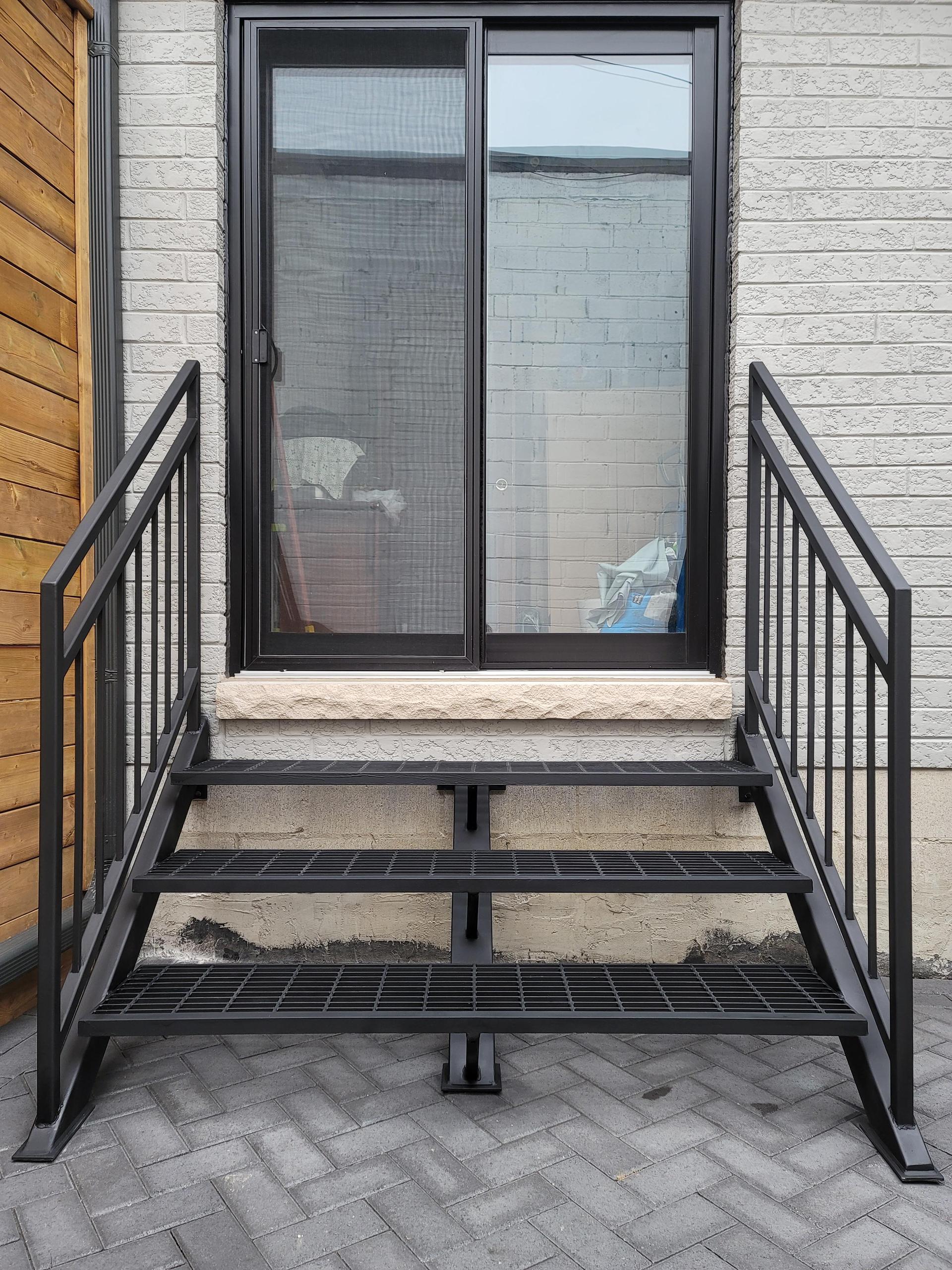
 Chat
Chat 








